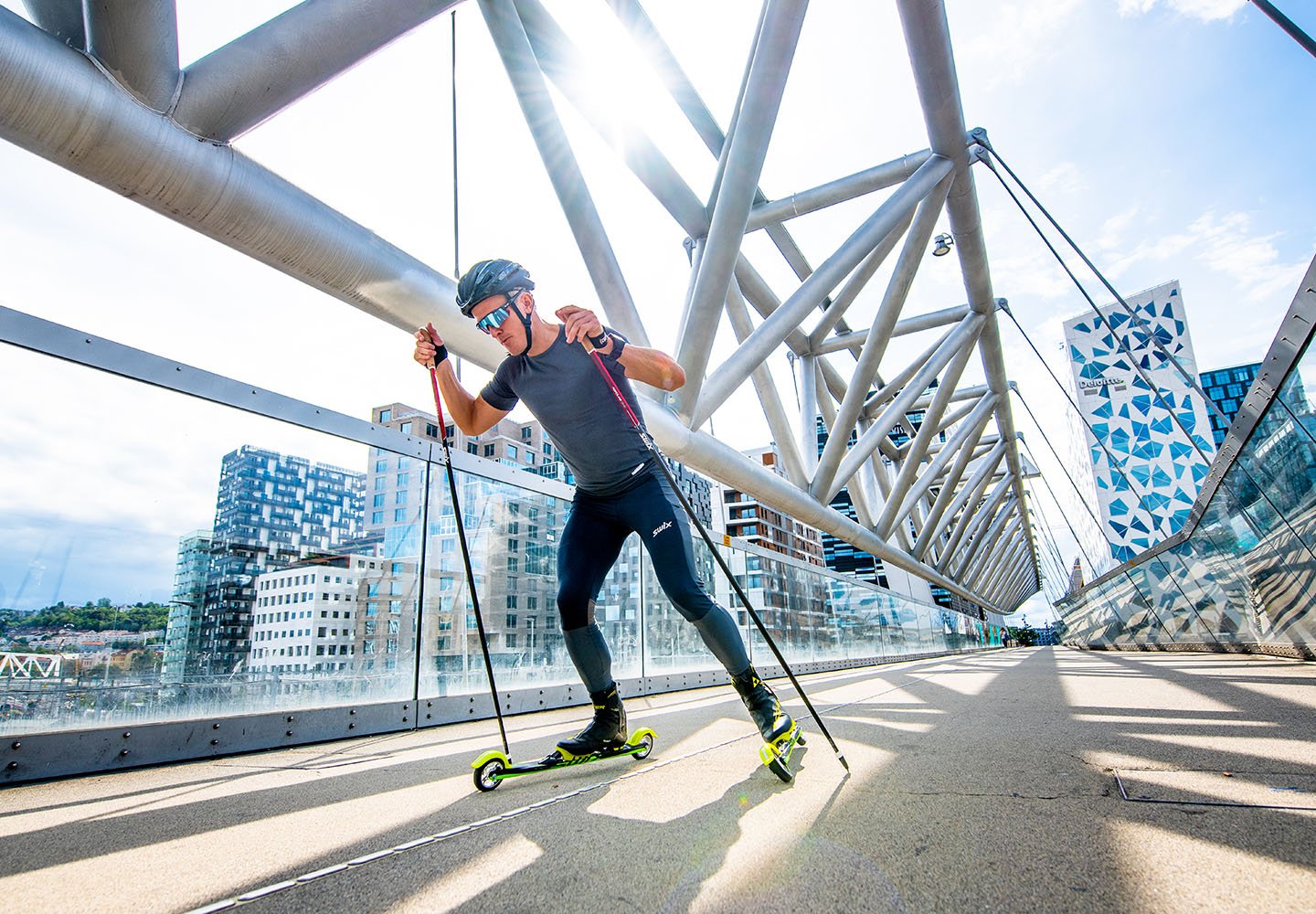Interval training on roller skis: Train like the best skiers
Former Norwegian national team coach Ole Morten Iversen reveals which session is often used among the best of the best roller skiers. Maybe you’ve already tried it?
Body text: Karl Filip Singdahlsen
Cold temperatures, snow and ski trails have been replaced by asphalt, hot spring days and roller skis. For many people, roller skis have become the most important form of training in order to lay the best possible foundation before the snow returns.
As on the cross-country trail, there are many different sessions you can do on roller skis, but in this episode of the Skisporet, national team coach Ole Morten Iversen was able to reveal one particular session that stands out as the favorite.
The interval session 6x8.
“It’s probably the one that cross-country skiers in Norway have been doing most of in recent years, and which I think is an excellent training session,” says Iversen to program managers Siri Sandvik and Åge Skinstad.
The session is carried out with six 8-minute intervals. A real hard session that puts your breath to the test.
The piece continues under the picture.
“A good tip is to create a lap that takes seven or eight minutes.” Take your time and remember: the goal is to be able to do the lap in the same time. If you manage it, and feel tired – but could manage an extra lap - you've done well. The point of such a session is to practice going up against competition for a relatively long time, i.e. when you need high speed in light terrain, and then you may have to hold back on the longest slopes. If you think that 8 minutes is a little too long, you can start with 5-6-minute intervals," says Iversen.
Training in zone 3 (or i3) will improve your ability to maintain high speed over a longer period of time without becoming stiff. The theory says that in i3 training, the heart rate should be between 82.5 – 87.5% of your max., but heart rate on its own is not a good parameter for controlling the intensity of your training, it is much better to use session design, speed and subjective experience to control such a session. On a well-executed i3 session, your heart rate at the end of the session should be slightly above the recommended zone.
"If you drop your speed and can't complete it, then you've maxed out. Many will be surprised at how easily the interval seems," says the national team coach.
Recommends two hard sessions per week
Iversen, a very systematic and experienced coach, also provides tips on how many hard sessions you should put into your training a week to improve.
“On average, cross-country skiers have two intensive sessions a week.” When you add up, the number of intensive sessions should be on a plus-/minus, he says.

So those who train five days a week should add two hard sessions to their program. In fact, those who train 3–4 times a week should also have two hard sessions a week.
“Yes, I would still have two hard, high-intensity sessions then too. Preferably a regular favorite session, but also occasionally invent some other hard sessions for some variation. I would have one on roller skis and one running (or maybe skiing with poles) on the uphill slope," Iversen continues.
Wait a little before starting systematic training
If the goal is to improve your time in Birken or another long run, the training week should also contain a longer session.
“Those training for Birken should also have include long runs in their training. Preferably of 2-3 hours in duration. That hour from 2-3 hours, you can't train in any other way than being outside for longer."
Nevertheless, Iversen is clear that this particular part of the season should be used for anything other than systematic training.
“Take a moment now to unwind a little before starting targeted training.” I would wait until June to systematize the training,"Iversen concludes.
